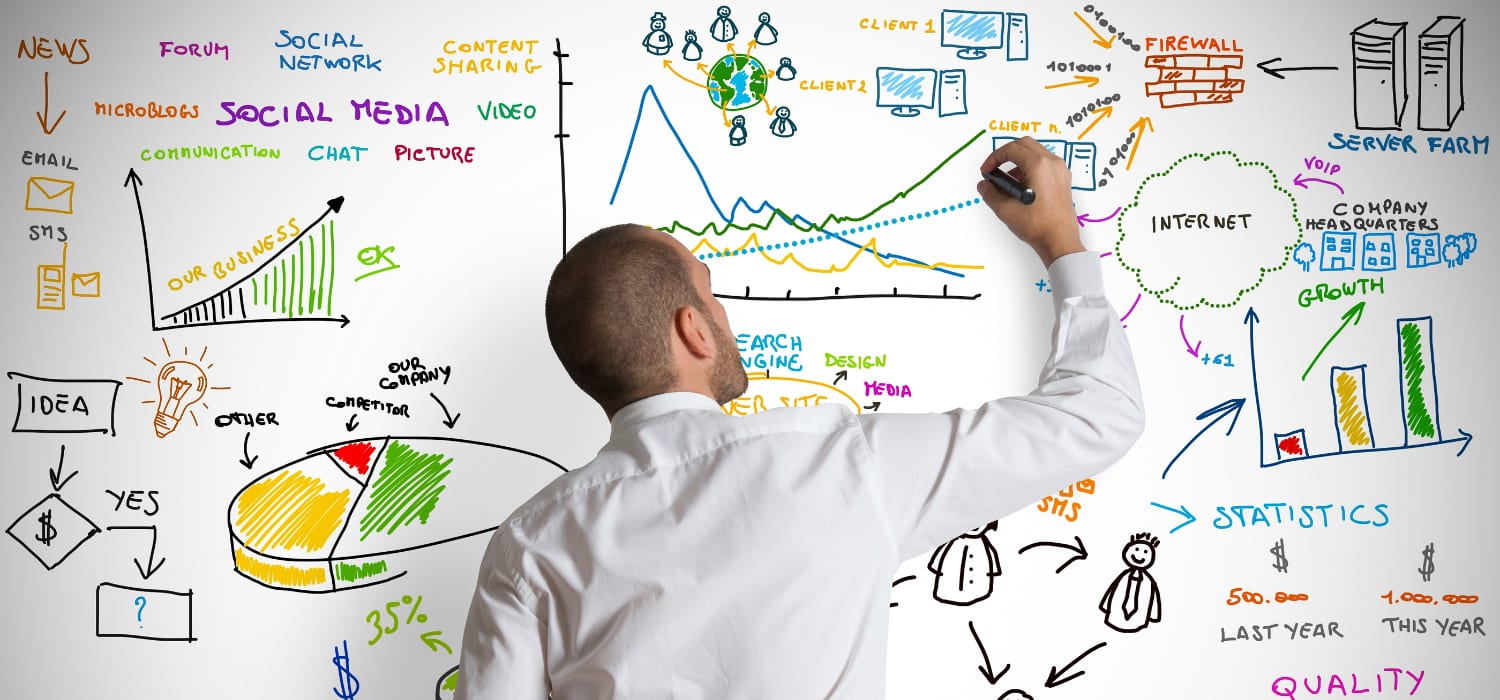Measuring a content marketing campaign requires a lot of moving parts. Agencies have it even tougher—you’re selling the success of a content campaign to your clients, and helping them improve to be even more successful in the future.
In doing so, you’re considering the content; its quality, its subject matter, and its format. You’re considering your consumer journey; where did we outperform, where did we hit our goals, and where can we improve? Finally, you’re considering your distribution channels; their traffic volume, traffic quality and conversion rates.
By analyzing these components—content, consumer journey, and channels—you’re looking to answer the following basic questions for your client:
- Were we successful at accomplishing our goal?
- What went wrong, and why, so we can improve next time?
- Did we spend our budget to the fullest potential?
While these questions seem simple, the simplest questions are often the hardest to answer.
This is your guide to measuring and presenting the success of your next content campaign so that you can clearly answer these questions for any client, no matter how large or small.
Step 1: Revisit your clearly defined goals.
Start your presentation by revisiting how your client defines success. This sets the stage for the structure of your presentation.
Throughout this guide, I’ll use a recent campaign that we ran here at Taboola as an example. We used a series of content items to increase the number of self-service Taboola campaigns in the US and Canada. We targeted small business (SMB) owners and marketing professionals.
This is an example of how we defined our goals:
Target Audience: SMB owners and marketing professionals in the US and Canada
Main Objective: Increase the number of Taboola self-service campaigns in the US and Canada
Goals:
- To raise brand awareness of Taboola as a growth channel for small businesses
- To engage audiences and drive traffic to our self-service sign-up wizard
- To drive conversions through our self-service sign-up wizard
- To obtain successfully launched Taboola campaigns
Defining these goals allowed us to pinpoint exactly where we were successful and where we could improve next time.
For example, for your campaign, you may have attracted a lot of traffic to your content items, but not as many conversions as you’d hoped. It’s possible that from there, you’ll pinpoint your landing page as an area of improvement, and distribution as an area of success.
Step 2: Get an aerial view of your overall performance.
It might seem overly obvious to remind your client of each content item you used for your campaign, but seeing it all in one place will help your client digest your campaign’s scope.
For our SMB campaign, we presented the following:
Content Items:
- 3 articles published on blog.taboola.com
- 2 sponsored articles published with a leading marketing publication
- 2 emails
After reviewing your content, give a high-level overview of how all pieces of content performed as a whole. These act as general success metrics for your campaign.
We started with the biggest goals and worked our way down.
Overall Success Metrics:
- Number of self-service campaigns launched
- Number of unique impressions (how many people reached)
- Conversion rate of impressions to campaigns launched
- Number of total visits to content
- A brief overview of what channels were used
These four success metrics, as well as a reminder of the distribution channels used, gave us a pretty good aerial view of our campaign’s success—but it’s the deeper dive that reveals areas for improvement.
Step 3: Visualize exactly how a person converted.
A major part of understanding a piece of content’s success is understanding where it fits into the user journey within each campaign. Lay out the user flow for your client, so they can see exactly how visitors made it to a position where they would ultimately convert.
There were four different possible user journeys for our SMB campaign, all of which ended with conversion through our self-service sign-up wizard.
User Journey:
- Taboola → article → sign-up wizard
- Social media → article → sign-up wizard
- Email → article → sign-up wizard
- Email → sign-up wizard
An understanding of the user journey put content success into context. For example, in one user flow, the success of an article is also dependent on the size of an email list, whereas in others, success is dependent on the scale of distribution channels.
Step 4: Break down performance by individual content items.
With the context of your user journey, you can dive into the content items themselves to allow your client to understand how you achieved the numbers you’ve presented.
For each article, both sponsored and published on our blog, we used several metrics to define the success of each.
Article Success Metrics:
- Visits
- Users
- Average time on page
- Click through rate (CTR) from content to self-service sign-up wizard
After looking at individual performance, we noted that article topics that discussed general business growth like, “How to Scale Sales Quickly” as opposed to general marketing themes like, “Drive Conversions Through Content Marketing,” were more successful for us when trying to convert this particular audience.
Draw similar insights from your campaign to provide a connection between the content and the people you’re trying to reach for your client.
Step 5: Analyze the channels that performed best for you.
Different campaigns will require different distribution channels, and it’s up to you to define what will work best for your client’s needs.
Break down the channels you chose for distribution—and most importantly, the budget you allocated to each—and explain the differences between each channel’s success.
Distribution Channels:
- Taboola (Content Discovery)
- Social Media
We started with a look at impressions over time—impressions per week over the course of a month. The third week in July was the best performing week, and we were able to see why. After we had seen success with Taboola during the second week of the campaign, we re-allocated budget from social media to Taboola and the campaign scaled faster.
Taboola was the most successful channel for us, and we reacted in real-time. Point out any decisions like this that you may have made for your client to showcase your expertise.
Finally, define the success of each channel. We looked at the following data by channel, both for overall content success, as well as by individual article.
Taboola Success Metrics:
- Impressions
- Readers
- CTR to Article
- CTR to Wizard
Twitter & Facebook Success Metrics:
- Reach
- Engaged Users
- Clicks on Link
Email Success Metrics:
- Opens
- Clicks
- Click to Open Rate
Analysis of each of the individual channels allowed us to see why some worked for us while others didn’t, and got us one step closer to answering whether or not we achieved our goals.
Step 6: Answer your three main questions, and plan ahead.
At the end of your presentation, revisit the goals you outlined in the beginning, and answer the three most important questions for campaign success clearly.
Campaign Success:
- Were we successful at accomplishing our goal? Yes. We reached our numerical goal of successfully launched Taboola campaigns.
- What went wrong, and why, so we can improve next time? For this audience, we’ll want to focus on general business growth, rather than marketing techniques.
- Did we spend our budget to the fullest potential? No, but we were close. In the future, we’ll allocate more budget to content discovery from the beginning of the campaign, while keeping a healthy marketing mix.
Your answers will probably be much more complex than this—the success of a content marketing campaign depends on many moving parts.
Giving a brief synopsis of the major achievements and goals brings the campaign into perspective for your client, and gives you the opportunity to teach them how their campaigns can get better as your relationship with them grows.





